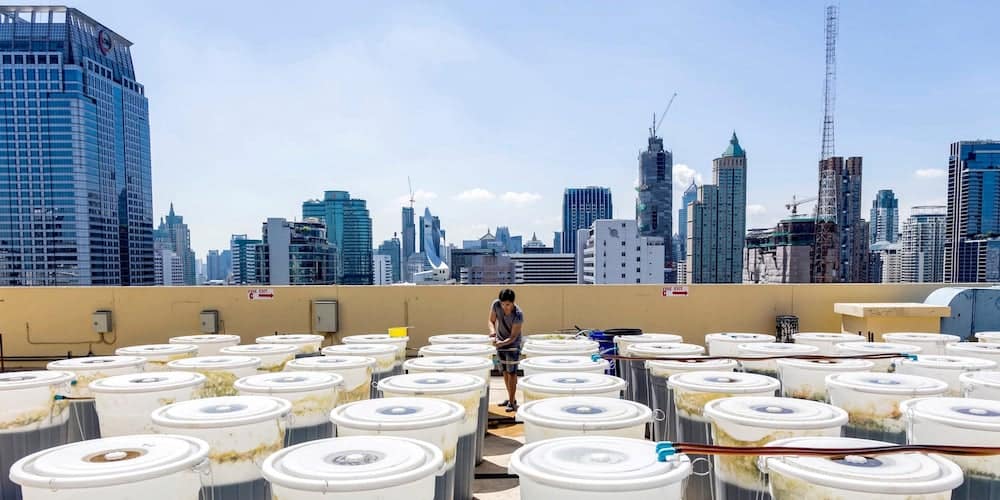MEMO ON SPIRULINA
✓ This cyanobacterium often confused with an alga is considered the food of the future
✓ Super nutritious: 3 x more protein than beef, 12 vitamins, 11 minerals, 18 amino acids
✓ Anti-fatigue, improves sports performance, stimulates the immune system
✓ Good for the environment: requires little water and space, absorbs large amounts of CO2, produces oxygen (especially compared to animal proteins)
Urban farms on rooftops and elsewhere
When you have an appointment in Bangkok, it’s better to plan ahead. This sprawling city of 20 million inhabitants is especially known for its traffic jams that could drive any yogi crazy. So, it’s with a good half-hour delay that we arrive at the headquarters of Energaia, a Thai startup that has been growing spirulina on the city’s (many) rooftops for over three years.
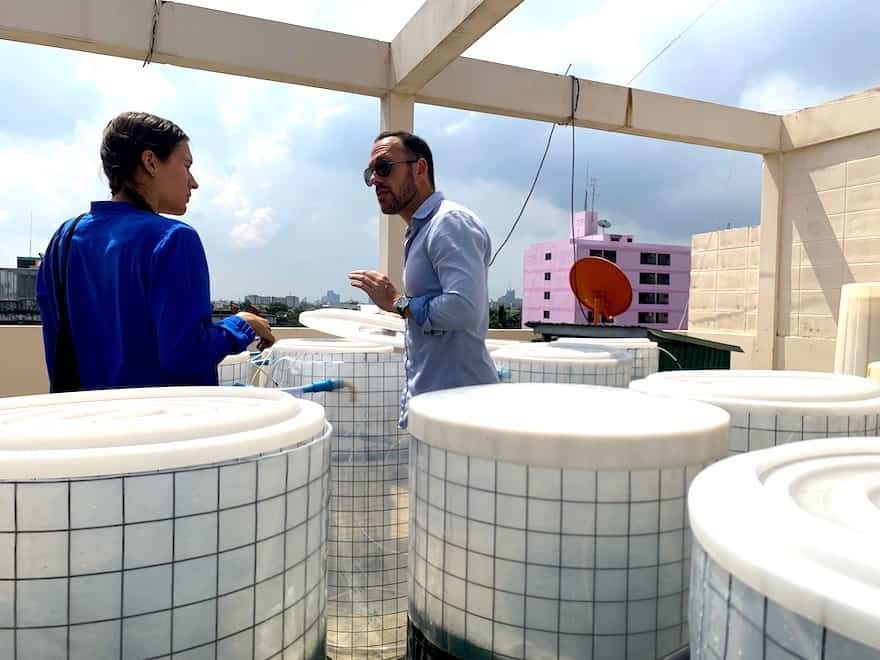
Klaus Rosenberg, the operations director of Energaia, welcomes us in an open space where dozens of young engineers from around the world are busy on their laptops. The team studies and develops spirulina cultures in unique bioreactors.
The founder, Saumil Shah, aimed to produce a sustainable and highly nutritious food source in a context where soil pollution is a major issue. In fact, in Thailand as in all of Southeast Asia, the land contains heavy metals, particularly arsenic.
In terms of agriculture, spirulina is then an interesting alternative because it does not require soil, nor much space, but only a little water and lots of sunlight!
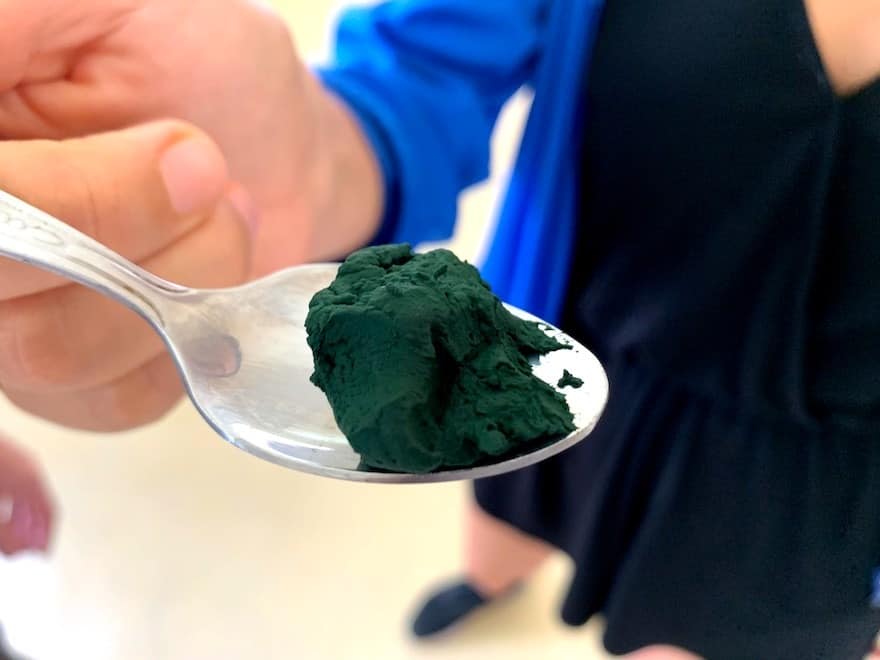
Very nutritious and low in energy consumption, it quickly meets the nutritional needs of those who cultivate it and is marketed in various forms. While it is increasingly talked about in France, urban farming is still new in Asia.
Energaia started installing urban spirulina farms on hotel rooftops, which cook it in their restaurants and market the rest.
The startup offers its clients a unique spirulina culturing technology in bioreactors, expertise in setting up urban farms, and innovative products based on fresh spirulina.

We are fascinated by the approach because it’s true that Bangkok brims with buildings, skyscrapers, residential and office towers, whose roofs are both disused and sunlit. Klaus takes us to Energaia’s rooftops to show us how it works!
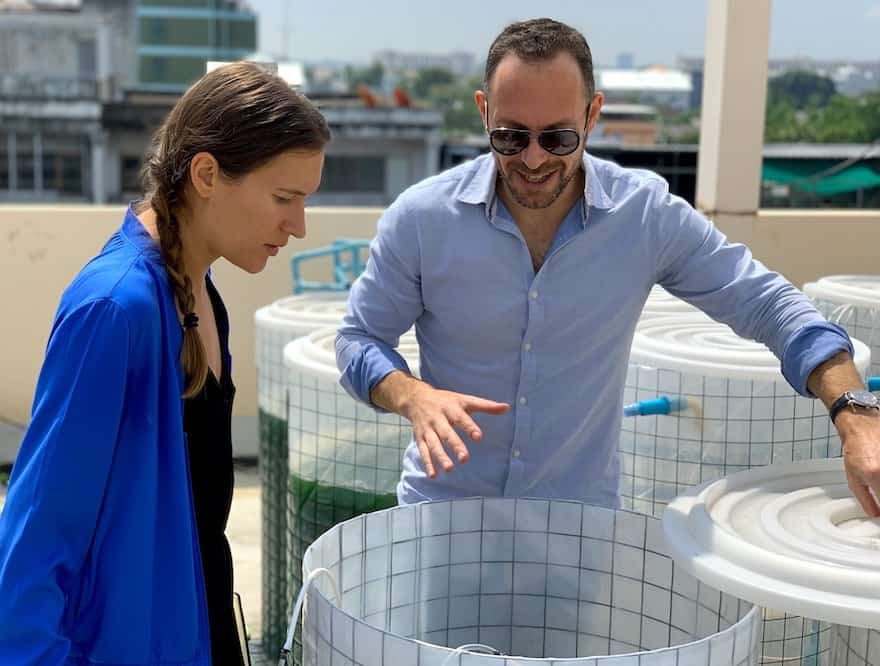
The bioreactors envisioned by the startup consist of a plastic tank, a grid, and a lid. They measure 1.20m in height, 60 cm in diameter, and can hold 250 L of water. The water is pre-treated and alkaline, in order to nourish the spirulina.
A pump creates current and captures oxygen. Approximately every 10 days, a harvest is conducted. This yield varies and allows for between 7g and 14g of spirulina powder per day and per barrel.
For more information on spirulina harvesting, read our report in an artisanal spirulina farm in the Southwest.
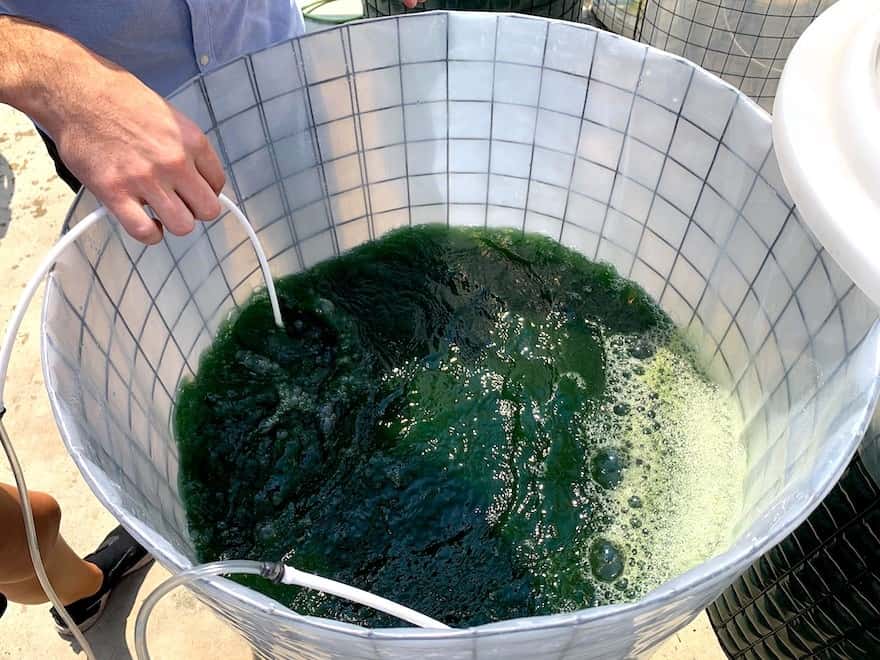
According to Klaus, these urban farms help reduce the carbon footprint of the food chain, optimize unused spaces, and are perfectly suited to small needs such as those of hotels, offices, and restaurants.
In the case of larger-scale production, which aims to achieve higher yields, rooftops are less suitable. Concerning the one we are visiting, it is used for conducting research. It is very, very hot on the roofs of Bangkok, so we don’t linger and head down to the lab this time.
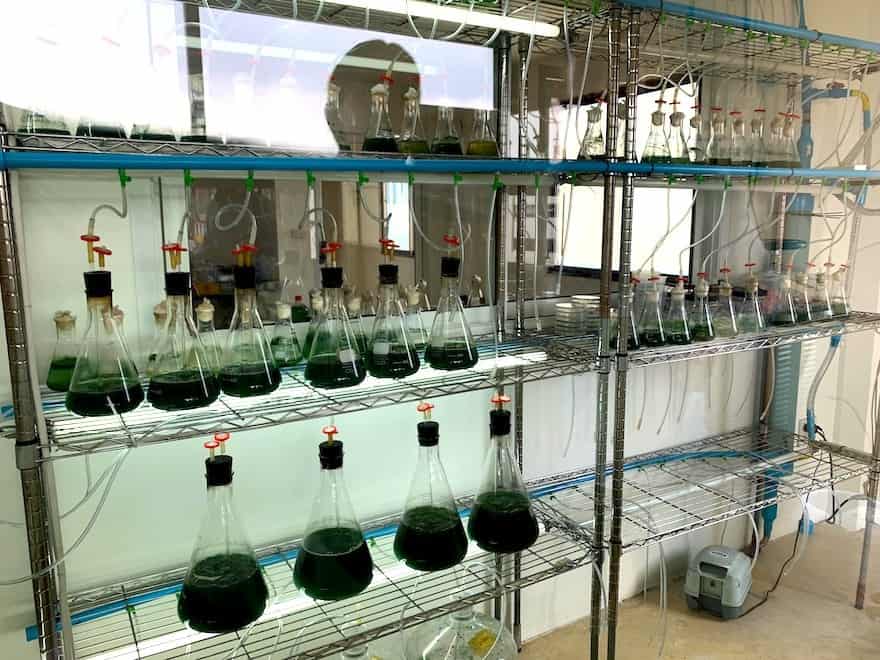
Within the laboratory, Energaia analyzes its spirulina daily, as well as that of some of its clients (those who own less than 500 barrels). The spirulina they transform contains less water than most on the market. “We sell more spirulina than water,” Klaus assures us.
The team has also created its own brand of spirulina, aptly named Skyline Spirulina, and markets fresh and powdered spirulina, linguini, crackers, and even ice cream! The spirulina-lemon sorbet is to die for 😍
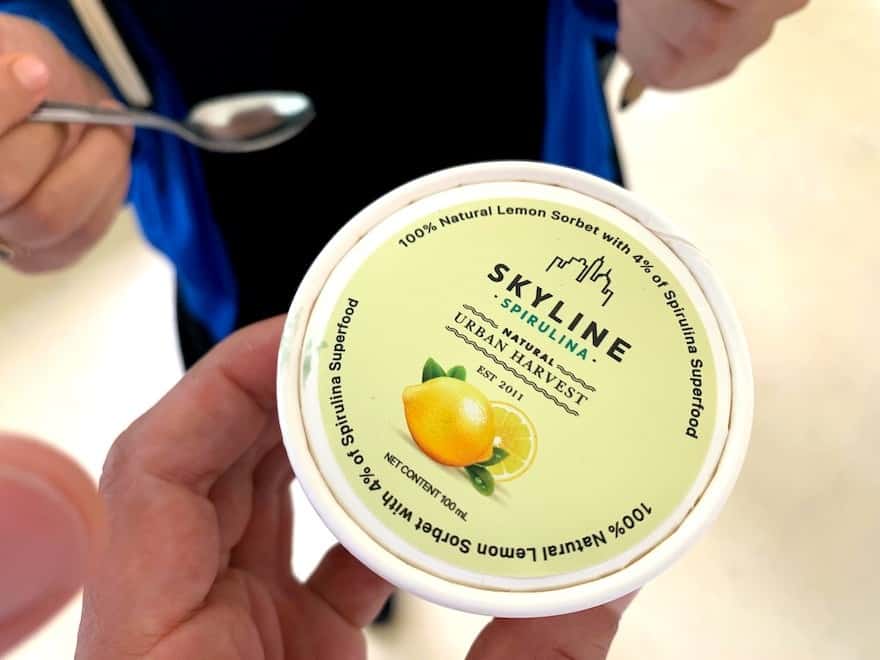
Can spirulina reduce poverty and meet the challenges of the 21st century?
Growing spirulina on Bangkok rooftops to supply hotels, vegan restaurants, and gyms is nice, but it’s super elitist. From the beginning, Energaia has been part of a socio-environmental approach, with UN goals for poverty reduction and food access in sight.
By 2050, we are expected to reach 10 billion people on earth. In the current ecological context, we will need to produce even more food, with the same land area, and using less water. As we’ve seen, spirulina, the best of plant proteins, has a low energy impact, and offers a healthy and ecological alternative to nutrients found in meat.
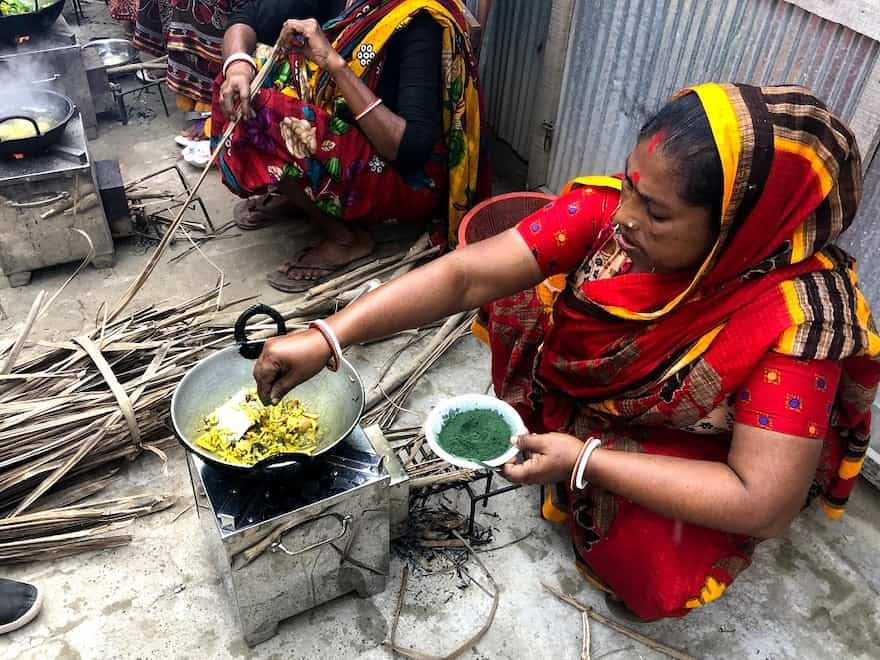
As a result, the startup is simultaneously developing spirulina farm programs in rural areas in Thailand, Indonesia, and Bangladesh. One of these projects called Creating Spirulina Microentrepreneurs to Solve Malnutrition was partly funded by the Bill & Melinda Gates Foundation.
The principle: train women from modest backgrounds to cultivate spirulina and provide them with bioreactors, in order to meet the nutritional and economic needs of their families. The spirulina produced is consumed by the families, and the rest is bought back by Energaia.
To learn more about spirulina and its benefits, discover our extensive report here!
We never imagined we would find spirulina, not only fresh but especially delicious in Bangkok, and yet we did! Another initiative that greatly inspires us and is not limited to meeting the needs of eco-hipster types 😉


